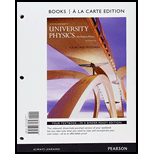
DATA For a refrigerator or air conditioner, the coefficient of performance K (often denoted as COP) is, as in Eq. (20.9), the ratio of cooling output |QC| to the required electrical energy input |W|, both in joules. The coefficient of performance is also expressed as a ratio of powers,
where |QC|/t is the cooling power and |W|/t is the electrical power input to the device, both in watts. The energy efficiency ratio (EER) is the same quantity expressed in units of Btu for |QC| and W · h for |W|. (a) Derive a general relationship that expresses EER in terms of K. (b) For a home air conditioner, EER is generally determined for a 95°F outside temperature and an 80°F return air temperature. Calculate EER for a Carnot device that operates between 95°F and 80°F. (c) You have an air conditioner with an EER of 10.9. Your home on average requires a total cooling output of |QC| = 1.9 × 1010 J per year. If electricity costs you 15.3 cents per kW · h, how much do you spend per year, on average, to operate your air conditioner? (Assume that the unit’s EER accurately represents the operation of your air conditioner. A seasonal energy efficiency ratio (SEER) is often used. The SEER is calculated over a range of outside temperatures to get a more accurate seasonal average.) (d) You are considering replacing your air conditioner with a more efficient one with an EER of 14.6. Based on the EER, how much would that save you on electricity costs in an average year?
Want to see the full answer?
Check out a sample textbook solution
Chapter 20 Solutions
University Physics with Modern Physics, Books a la Carte Plus Mastering Physics with eText -- Access Card Package (14th Edition)
Additional Science Textbook Solutions
Campbell Essential Biology with Physiology (5th Edition)
Microbiology: An Introduction
Introductory Chemistry (6th Edition)
Human Physiology: An Integrated Approach (8th Edition)
Applications and Investigations in Earth Science (9th Edition)
Campbell Biology (11th Edition)
- What is the resistance (in (2) of a 27.5 m long piece of 17 gauge copper wire having a 1.150 mm diameter? 0.445 ΧΩarrow_forwardFind the ratio of the diameter of silver to iron wire, if they have the same resistance per unit length (as they might in household wiring). d. Ag dFe = 2.47 ×arrow_forwardFind the ratio of the diameter of silver to iron wire, if they have the same resistance per unit length (as they might in household wiring). d Ag = 2.51 dFe ×arrow_forward
- Show that the units 1 v2/Q = 1 W, as implied by the equation P = V²/R. Starting with the equation P = V²/R, we can get an expression for a watt in terms of voltage and resistance. The units for voltage, V, are equivalent to [? v2 v2 A, are equivalent to J/C ✓ X . Therefore, 1 = 1 = 1 A V1 J/s Ω V-A X = 1 W. . The units for resistance, Q, are equivalent to ? The units for current,arrow_forwardPlease solve and answer the question correctly please. Thank you!!arrow_forwardPlease solve and answer the question correctly please. Thank you!!arrow_forward

 Principles of Physics: A Calculus-Based TextPhysicsISBN:9781133104261Author:Raymond A. Serway, John W. JewettPublisher:Cengage Learning
Principles of Physics: A Calculus-Based TextPhysicsISBN:9781133104261Author:Raymond A. Serway, John W. JewettPublisher:Cengage Learning Physics for Scientists and EngineersPhysicsISBN:9781337553278Author:Raymond A. Serway, John W. JewettPublisher:Cengage Learning
Physics for Scientists and EngineersPhysicsISBN:9781337553278Author:Raymond A. Serway, John W. JewettPublisher:Cengage Learning Physics for Scientists and Engineers with Modern ...PhysicsISBN:9781337553292Author:Raymond A. Serway, John W. JewettPublisher:Cengage Learning
Physics for Scientists and Engineers with Modern ...PhysicsISBN:9781337553292Author:Raymond A. Serway, John W. JewettPublisher:Cengage Learning Physics for Scientists and Engineers: Foundations...PhysicsISBN:9781133939146Author:Katz, Debora M.Publisher:Cengage Learning
Physics for Scientists and Engineers: Foundations...PhysicsISBN:9781133939146Author:Katz, Debora M.Publisher:Cengage Learning Physics for Scientists and Engineers, Technology ...PhysicsISBN:9781305116399Author:Raymond A. Serway, John W. JewettPublisher:Cengage Learning
Physics for Scientists and Engineers, Technology ...PhysicsISBN:9781305116399Author:Raymond A. Serway, John W. JewettPublisher:Cengage Learning





